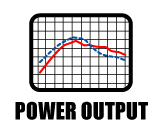Map Notes for 2006-2007 WRX AT
Supported Vehicles:
USDM 2006-2007 WRX AT
Map Revision
| Map | Version |
|---|---|
| Stage1 | v400 |
Map Availability:
- Download from the COBB Tuning Subaru WRX OTS Map Database.
Required Accessport Firmware:
- V3: 1.7.4.0-17431
Non-Performance Maps
Anti-Theft Mode
Will not allow vehicle to start
Economy Mode
Fuel Requirements: 91 octane or better
- Intake Requirements: Stock airbox or COBB Tuning SF Intake SUB00001IA
- Exhaust Requirements:
- Stock or COBB Cat-Back Exhaust 512100
Boost Control Solenoid: Stock boost solenoid
Boost Targets: Mechanical minimum (typically around 6psi - 10psi)
* Not intended for aggressive driving*
Valet Mode
Fuel Requirements: 91 octane or better
- Intake Requirements: Stock airbox or COBB Tuning SF Intake SUB00001IA
- Exhaust Requirements:
- Stock or COBB Cat-Back Exhaust 512100
Boost Control Solenoid: Stock boost solenoid
Boost Targets: Mechanical minimum (typically around 6psi - 10psi)
Rev Limiter: 3200 RPM
Monitoring Boost Levels:
The best way to determine if you are hitting target boost is to watch the TD Boost Error parameter. This parameter is your target boost (including altitude and temperature compensations) minus your actual boost (negative values mean you are over the target by the amount while positive values mean you are under). Ideally you want this value to be between 0 and 1.0 at wide open throttle (WOT), but -1.0 to 1.0 is acceptable assuming that you don’t have any significant knock corrections. Overboosting is more likely to occur in higher gears and with colder outside temperatures, so be sure to verify boost levels during these conditions.
High Altitude:
A quick note for those of you that live at higher altitudes. It is common for turbocharged cars at higher altitudes to run less boost pressure due to lower air pressure and air density. Your turbocharger has to work harder to compress a less dense air mass compared to the same turbocharger at sea level. This must be factored in when determining if your turbocharger is running the proper amount of boost pressure and not being pushed beyond its efficiency range.
Example: If you live in Denver at 5280 ft and are trying to run a peak boost pressure of 15 psi, your turbocharger has to work the equivalent of making ~17.5 psi at sea level.
There are barometric compensations within the factory ECU that lower boost targets as you climb in altitude in an effort to keep the turbocharger in its optimal range. The COBB performance maps utilize these compensations and therefore, it is perfectly normal for the final boost target to be lower than what is listed for your map.
Revision Notes:
| Version # | Notes: |
|---|---|
| v400 | Maps updated to eliminate unnecessary DTC Supression or updated versions for parity with other maps/vehicles within the platform |
| v350 | This map eliminates unnecessary DTC suppression. |
| v300 | Now compatible with Launch Control and Flat-Foot Shifting (LC/FFS) features (MT only). For complete details on how to enable and use the LC/FFS functionality, please visit this FAQ. These maps have been created with the newly-released AccessTUNER Pro 1.9.0.0. Maps created with this version of AccessTUNER software require the latest AccessPORT firmware (version 1.6.4.0-1189 or higher) be installed. AccessPORT Manager 2.0 will automatically update the AccessPORT to the latest firmware version and is available for download on the COBB Tuning Support web page. |
| v102 | Modified ignition optimization settings for low RPM ignition floor. Modified CL/OL fuel settings for optimal performance and further optimized ignition advance settings. |
| v100 | Original Mapping. Tuned AVCS, Boost, Fuel, Ignition, Closed Loop control, Dynamic Advance, Throttle Duty Cycles, and base programming logic to improve the driving quality of the car. Revised Closed Loop management. Revised boost control parameters. Smoothed out boost related values, improved boost response at lower RPMs. Revised AVCS mapping. Altered intake cam timing parameters in an effort to improve low and mid-range torque and boost response. Modified high RPM timing and Dynamic Advance parameters to allow for improved ignition advance learning when using improved octane. Modified Primary Fuel and Primary Ignition tables to account for the effects of AVCS tuning. Further tuned Dynamic Advance table to promote smooth transitional (low RPM to high RPM) acceleration. Raised speed limiter. Moved Speed Limits to 186 mph. Increased boost cut to 17.11psi at sea level. |
-
-
-
Related content
Copyright 2025 © COBB Tuning Products LLC. All Rights Reserved. | www.cobbtuning.com

